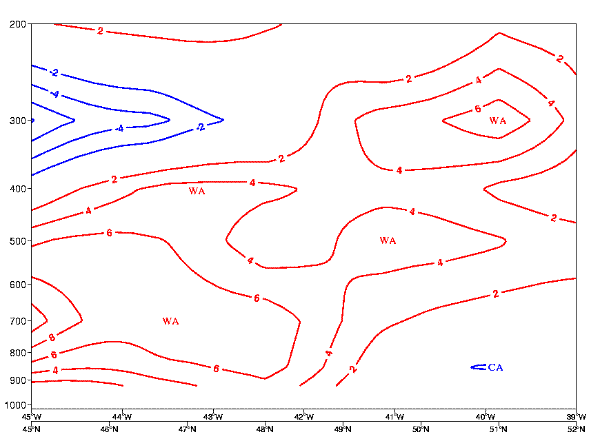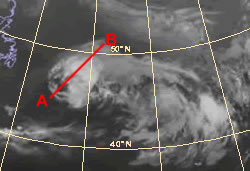ETT Model Fields 0600 UTC 06/08/2004









Isentropes
The isentropes θe show an inclined crowding zone to the northeast of Alex with an increasing stability from low levels throughout the atmosphere. The gradient of change within the isentropic surfaces shows that within the northeast quadrant of the hurricane that stabilisation is now occuring rapidly. Limited potential instablity is occuring under the cloud sheild, however the hurricane eye is no longer apparent.
The isentropes θe show an inclined crowding zone to the northeast of Alex with an increasing stability from low levels throughout the atmosphere. The gradient of change within the isentropic surfaces shows that within the northeast quadrant of the hurricane that stabilisation is now occuring rapidly. Limited potential instablity is occuring under the cloud sheild, however the hurricane eye is no longer apparent.
